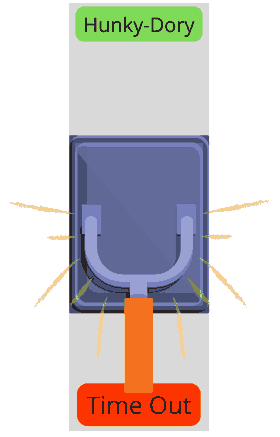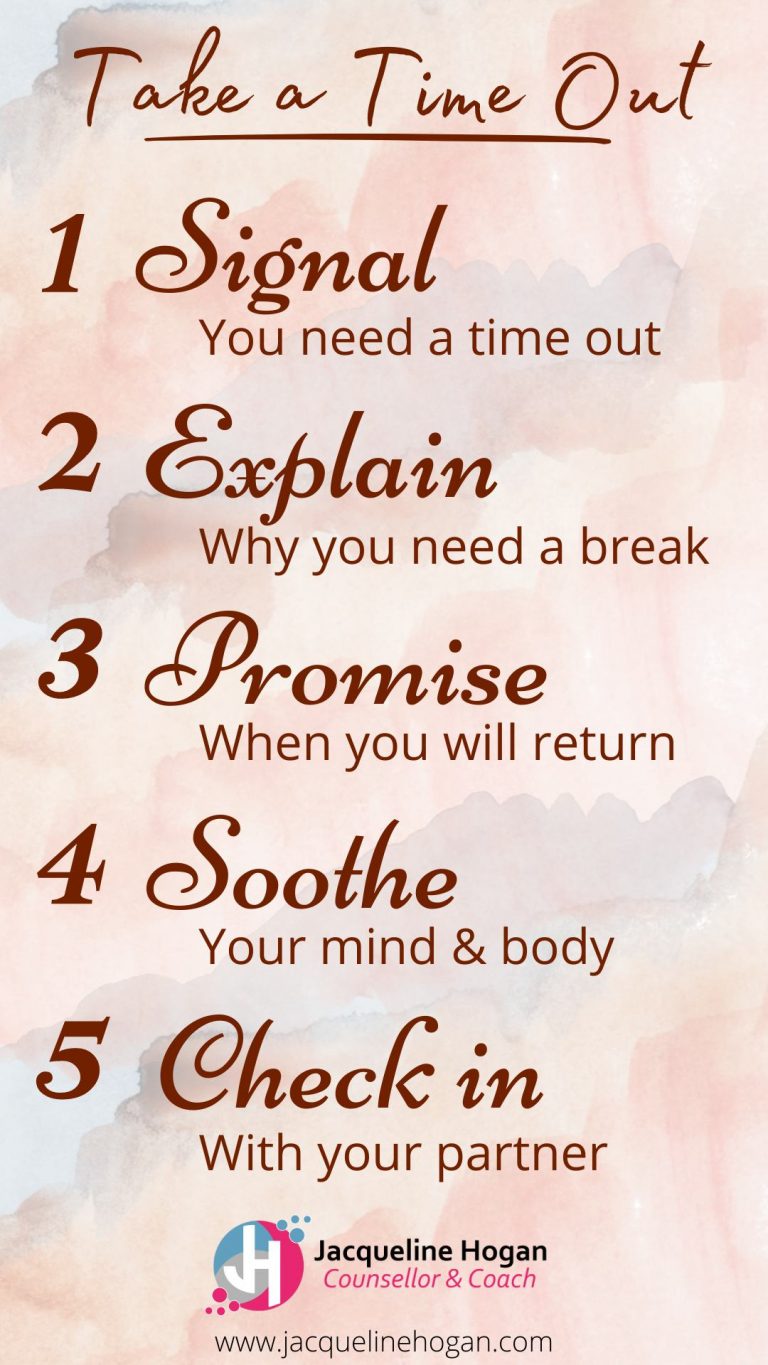A Circuit Breaker for Couples at Boiling Point
Based on the work of Terry Real (Relational Life Therapy)
A circuit breaker prevents your home burning down when there’s an electrical fault in your house.
Likewise, a ‘time out’ acts as a ‘personal circuit breaker’ to prevent a relationship meltdown when things are heating up between you.
The key is knowing when to use it, and how to use it.
You’re in luck! – This article answers those two things!
I’m confident by the end of this article you’ll know all the steps to effectively operate your ‘personal circuit breaker’ and successfully take a time out.
Time outs are essential for maintaining the integrity of your relationship.
Be sure to download the 5-step guide info-graphic at the end of this article, to your smartphone, so you have the steps handy and at your fingertips when you need it most.

What are Time Outs For?
Time outs are for you.
If you picture a time out as a circuit breaker, it ‘trips’ (turns off) when things are getting hot. You will feel it and hear it. You’ll sense pressure rising, speak in louder voices, feel sharp emotions rising, be pacing around, and pointing fingers etc.
Tune into the sensation. This is the point you flip the switch and call a time out. ie. Before you say or do something you regret.
Circuit Breakers are preventative measures. They maintain the integrity of the relationship.
Good self awareness is key for calling a time out at the right time. To help you practice this self-awareness be sure to read this resource and do the exercise on Noticing Your Warning Signs.

Respect Time Outs and the Process
Calling a time out and taking a break is your call.
Do it by literally saying “I need a time out”. Use the “T” hand signal as well if you want to.
Congratulations, you’ve successfully used your self-awareness to detect you’re feeling volatile and you don’t like where you’re headed.
As the partner, respect your partners decision to take a time out. It’s their call. It’s the best option for your relationship.

Explain Why & Set the Scence
Taking a break is about creating distance and time. This provides space for you to self-sooth, de-escalate and return to calm. The time could vary, which is why we have different intervals listed in the steps below.
For now, you want to practice good communication and explain briefly why you are taking a time out. This is an important step. Without it, storming off without saying anything is likely to be seen as stonewalling and avoidance.
After briefly explaining why you need a time out – say when you will return.
This provides some assurance to your partner and gives them an expectation to work around. Learn more about the time intervals below.
A short example might be:
“Hey Steve, I’m feeling overwhelmed right now, and I’m about to lose it. I need to take a time out. Let’s take an hour break, I need to calm down. I’ll check in with you at 4 o’clock.”
Stay True to Your Intentions - Practice Self Soothing
Actively practice self-soothing. Ideally you will know what your go-to self soothing exercises are. If not, be sure to learn a couple.
The point here is to be true to your word, respect the relationship and commit to self-soothing.
Popular options include mindful meditation, breathing exercises, going for a walk, exercise, sleep, reading, gentle music, affirmations, a relaxing hobby.
This is not the time to ‘actively prolong’ your heightened state. For example, avoid alcohol and engaging in destructive / unhealthy behaviours that undermine your relationship. Choose the mature response, and de-escalate.

Check In Intervals
Check in with your partner like you said you would. Hopefully time has been kind and you are in a much better place.
If not you will need to extend your time out. See below.
If you are in a much better place, avoid the mistake of jumping back into the argument. Instead turn toward each other. Nurture each other and support each other. Re-establish the connection.
Recommended time-out intervals are:
- An hour
- Three hours
- Half a day
- Overnight
- A full day (24 hours)
Extend your time-out as required.

Reconnect After Your Time Out
Time outs are all about returning to calm. The Window of Tolerance article is an excellent resource to understand here.
Reconnect with each other, and be the mature partner you aspire to be. That means putting aside the problems and issues for now. Focus on each other’s needs and do something soothing for the relationship.
Popular options include, cuddling on the couch. Holding hands and going for a walk. Kind conversations. Perhaps browse and recite Love Sparks to each other, or practice a gratitude exercise for your relationship.
Allow a Grace Period for Triggering Topics
Start with a 24 hour grace period before returning to a triggering topic. You might need longer, perhaps a week or more.
Try a different approach to avoid repeating the same cycle. Use Smooth Conversations cards to start softly, seek understanding and stay on track.
Brush up on your Warning Sign’s – this is self-awareness in practice, and essential for calling a time out at the right moment.
For clients, working with me in session is an excellent way to process current issues in a safe and effective way. You can also use the self-guided interventions in your program folder for further repair.

Know Your Triggers & When to Get Help
Do some specific topics grind your gears?
Are you in a gridlocked pattern with your partner and nothing you try seems to help?
Then it’s time to seek help. Slowing down and going through communication interventions together allows for fresh perspectives and new realisations.
New perspectives and subtle shifts toward compromise is sometimes all it takes for a viable solution and breakthrough to occur.
Remember you are only ever one conversation away from finding peace and harmony in your relationship.
Know when it’s time to seek help. If you are calling for time outs regularly, professional intervention can help.
If there is a specific external topic causing conflict – seek help in that area. Eg Career, Finances, Health, Legal, Parental, etc.
Take Responsibility for Improvement
Work on your weaknesses. Acknowledge them, and support each other to improve.
Use Smooth Conversations on a regular basis. Do the exercises in your program folder. Browse the resources on this website and reduce worry, create a vision for the future, have stress reducing conversations.
By actively becoming a better partner you will both be better communicators, lovers, parents and so on.
Download the Quick-Glance Guide
Download the picture (jpeg) or PDF to your phone. Set them as favourites or bookmark them in your device for quick and easy access.
Next time you feel yourself being triggered and feel the urge to call a time out – check your phone and follow the steps.






